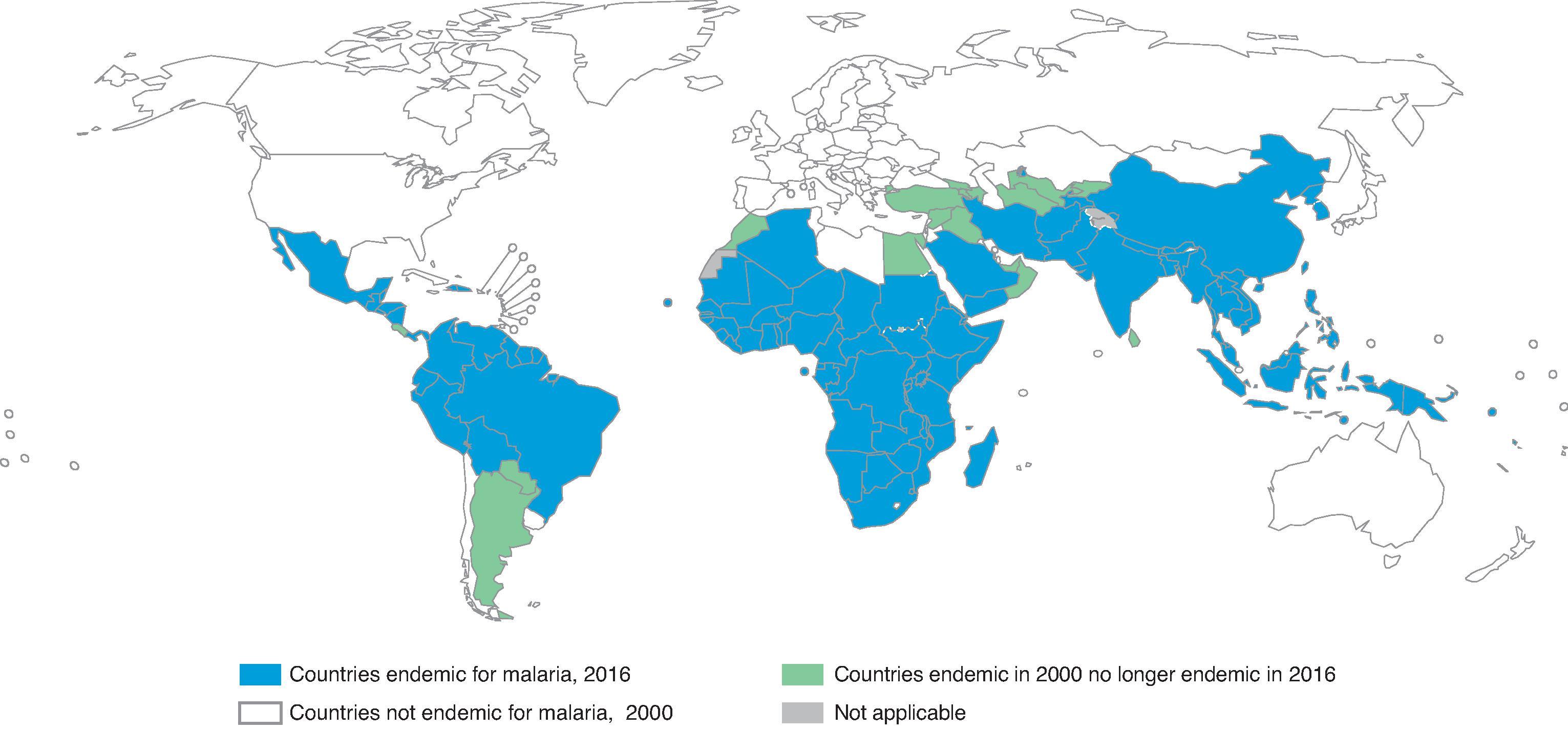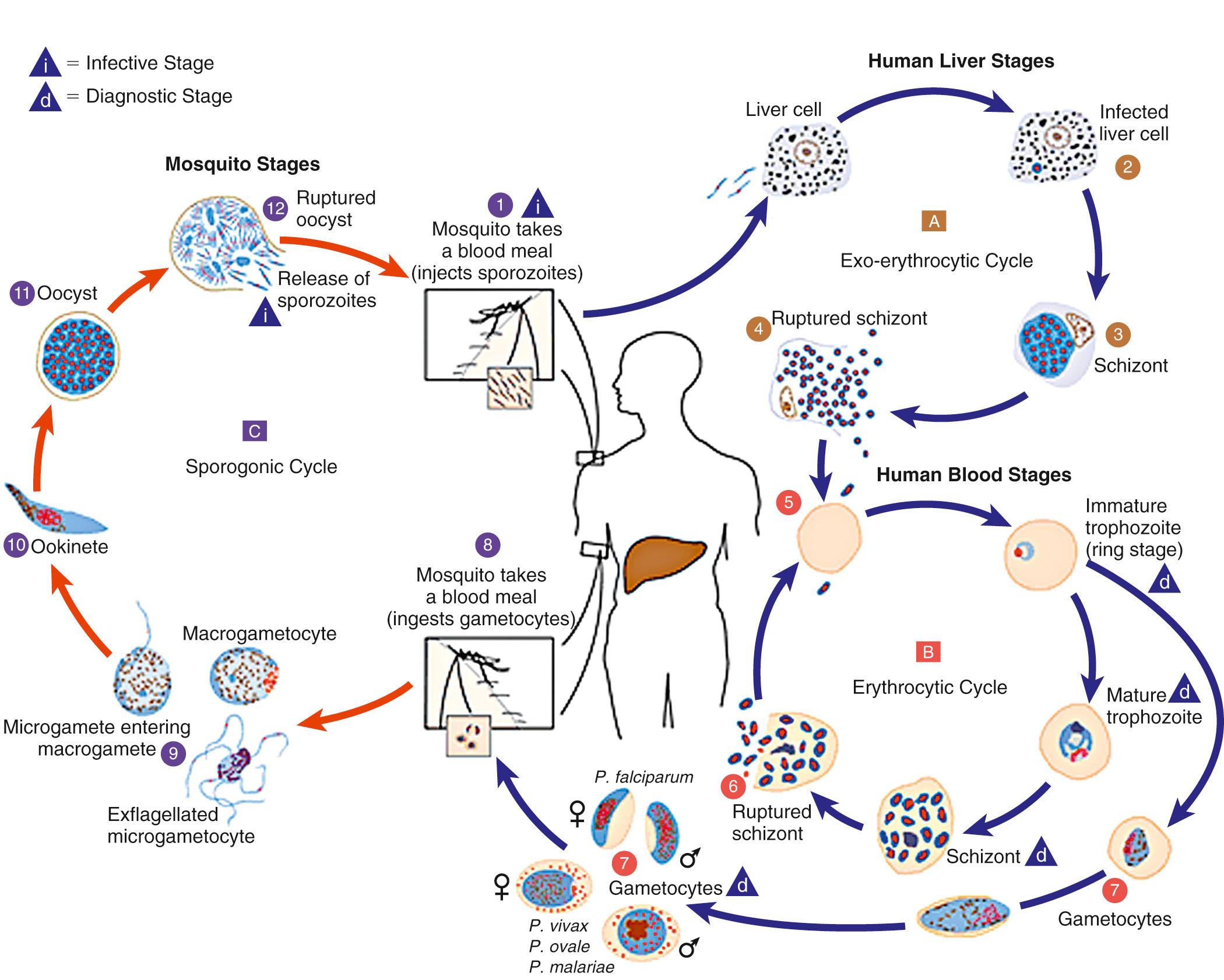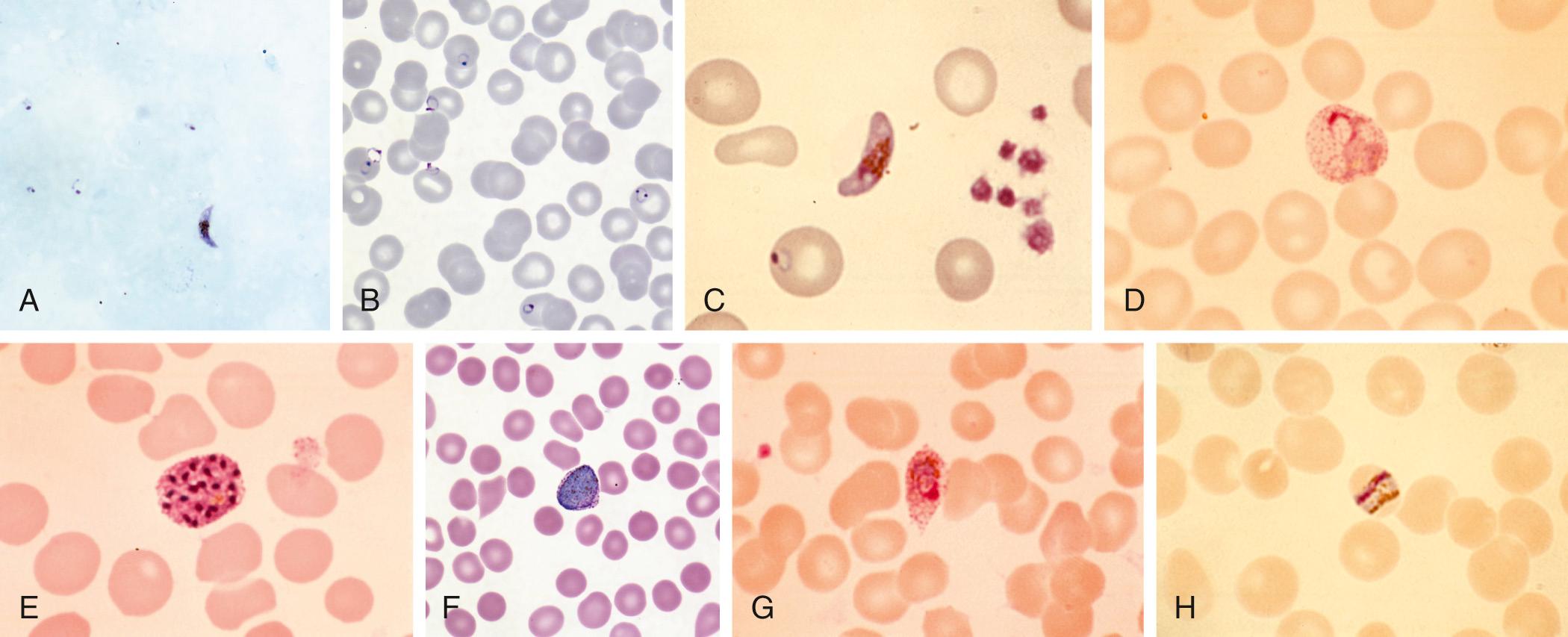Physical Address
304 North Cardinal St.
Dorchester Center, MA 02124
Malaria is an acute illness characterized by paroxysms of fever, chills, sweats, fatigue, anemia, and splenomegaly. It has played a major role in human history, causing harm to more people than perhaps any other infectious disease. Although substantial progress has been made in combating malaria in endemic areas, with a 37% reduction in malaria incidence and 60% reduction in malaria mortality, malaria remains one of the leading causes of morbidity and mortality worldwide, with an estimated 214 million cases and 438,000 deaths in 2015. Malarial deaths in areas of high malaria transmission occur primarily in children <5 yr of age, but in areas of low transmission, a large percentage of deaths may occur in older children and adults. Although malaria is not endemic in the United States, 1,500-2,000 imported cases are seen in the United States each year. Physicians practicing in nonendemic areas should consider the diagnosis of malaria in any febrile child who has returned from a malaria-endemic area within the previous year, because delay in diagnosis and treatment can result in severe illness or death.
Malaria is caused by intracellular Plasmodium protozoa transmitted to humans by female Anopheles mosquitoes. Before 2004, only 4 species of Plasmodium were known to cause malaria in humans: P. falciparum, P. malariae, P. ovale , and P. vivax . In 2004, P. knowlesi (a primate malaria species) was also shown to cause human malaria, and cases of P. knowlesi infection have been documented in Malaysia, Indonesia, Singapore, and the Philippines. Malaria also can be transmitted through blood transfusion and use of contaminated needles and transplacentally from a pregnant woman to her fetus. The risk for blood transmission is low in the United States, but may occur through transfusion of whole blood, packed red blood cells (RBCs), platelets, and leukocytes and through organ transplantation.
Malaria is a major worldwide problem, occurring in 95 countries that comprise approximately half the world's population ( Fig. 314.1 ). The principal areas of transmission are Africa, Asia, and South America. P. falciparum and P. malariae are found in most malarious areas. P. falciparum is the predominant species in Africa, Haiti, and New Guinea. P. vivax predominates in Bangladesh, Central America, India, Pakistan, and Sri Lanka. P. vivax and P. falciparum predominate in Southeast Asia, South America, and Oceania. P. ovale is the least-common species and is transmitted primarily in Africa. Transmission of malaria has been eliminated in most of North America (including the United States), Europe, and most of the Caribbean, as well as Australia, Chile, Israel, Japan, Lebanon, and Taiwan.

Most cases of malaria in the United States occur among previously infected visitors to the United States from endemic areas and among U.S. citizens who travel to endemic areas without appropriate chemoprophylaxis. The most common regions of acquisition of the approximately 1,700 cases of malaria reported to the Centers for Disease Control and Prevention (CDC) among U.S. citizens in 2013 were Africa (82%), Asia (11%), and the Caribbean and Central or South America (7%). Although only 17% of malaria cases occurred in children (<18 yr old), children <5 yr old were more likely to develop severe malaria (37%) than were persons ≥5 yr old (15%). All the 10 deaths from malaria were caused by P. falciparum . Rare cases of apparent locally transmitted malaria have been reported since the 1950s. These cases may result from transmission from untreated and often asymptomatic infected individuals from malaria-endemic countries who travel to the United States and infect local mosquitoes or from infected mosquitoes from malaria-endemic areas that are transported to the United States on airplanes.
Plasmodium species exist in a variety of forms and have a complex life cycle that enables them to survive in different cellular environments in the human host (asexual phase) and the mosquito (sexual phase) ( Fig. 314.2 ). A marked amplification of Plasmodium , from approximately 10 2 to as many as 10 14 organisms, occurs during a 2-step process in humans, with the 1st phase in hepatic cells (exoerythrocytic phase) and the 2nd phase in the RBCs (erythrocytic phase). The exoerythrocytic phase begins with inoculation of sporozoites into the bloodstream by a female Anopheles mosquito. Within minutes, the sporozoites enter the hepatocytes of the liver, where they develop and multiply asexually as a schizont . After 1-2 wk, the hepatocytes rupture and release thousands of merozoites into the circulation. The tissue schizonts of P. falciparum, P. malariae, and apparently P. knowlesi rupture once and do not persist in the liver. There are 2 types of tissue schizonts for P. ovale and P. vivax . The primary type ruptures in 6-9 days, and the secondary type remains dormant in the liver cell for weeks, months, or as long as 5 yr before releasing merozoites and causing relapse of infection. The erythrocytic phase of Plasmodium asexual development begins when the merozoites from the liver penetrate erythrocytes. Once inside the erythrocyte, the parasite transforms into the ring form , which then enlarges to become a trophozoite . These latter 2 forms can be identified with Giemsa stain on blood smear, the primary means of confirming the diagnosis of malaria ( Fig. 314.3 ). The trophozoite multiplies asexually to produce a number of small erythrocytic merozoites that are released into the bloodstream when the erythrocyte membrane ruptures, which is associated with fever. Over time, some of the merozoites develop into male and female gametocytes that complete the Plasmodium life cycle when they are ingested during a blood meal by the female anopheline mosquito. The male and female gametocytes fuse to form a zygote in the stomach cavity of the mosquito. After a series of further transformations, sporozoites enter the salivary gland of the mosquito and are inoculated into a new host with the next blood meal.


Physiology and pathogenesis in malaria differ according to species. Infection with all species leads to fever , caused by the host immune response when erythrocytes rupture and release merozoites into the circulation, and anemia , caused by hemolysis and bone marrow suppression. Severe malaria is more common in P. falciparum because of several process, including higher-density parasitemia, which may lead to excessive production of proinflammatory cytokines; cytoadherence of P. falciparum -infected erythrocytes to the vascular endothelium; and polyclonal activation, resulting in both hypergammaglobulinemia and the formation of immune complexes. Cytoadherence of infected erythrocytes to vascular endothelium can lead to obstruction of blood flow and capillary damage, with resultant vascular leakage of blood, protein, and fluid and tissue anoxia. Parasite anaerobic metabolism may also lead to hypoglycemia and metabolic acidosis. The cumulative effects of these pathologic processes may lead to cerebral, cardiac, pulmonary, renal, and hepatic failure.
Immunity after Plasmodium sp. infection is incomplete, preventing severe disease but still allowing future infection. In some cases, parasites circulate in small numbers for a long time but are prevented from rapidly multiplying and causing severe illness. Repeated episodes of infection occur because the parasite has developed a number of immune-evasive strategies, such as intracellular replication, vascular cytoadherence that prevents infected erythrocytes from circulating through the spleen, rapid antigenic variation, and alteration of the host immune system resulting in partial immune suppression. The human host response to Plasmodium infection includes natural immune mechanisms that prevent infection by other Plasmodium spp., such as those of birds or rodents, as well as several alterations in erythrocyte physiology that prevent or modify malarial infection. Erythrocytes containing hemoglobin S (sickle erythrocytes) resist malaria parasite growth, erythrocytes lacking Duffy blood group antigen are relatively resistant to P. vivax , and erythrocytes containing hemoglobin F (fetal hemoglobin) and ovalocytes are resistant to P. falciparum . In hyperendemic areas, newborns rarely become ill with malaria, in part because of passive maternal antibody and high levels of fetal hemoglobin. Children 3 mo to 2-5 yr of age have little specific immunity to malaria species and therefore suffer yearly attacks of debilitating and potentially fatal disease. Immunity is subsequently acquired, and severe cases of malaria become less common. Severe disease may occur during pregnancy, particularly first pregnancies or after extended residence outside the endemic region. Both T-cell and antibody responses are important in development of biologic and clinical immunity to Plasmodium spp.
Become a Clinical Tree membership for Full access and enjoy Unlimited articles
If you are a member. Log in here